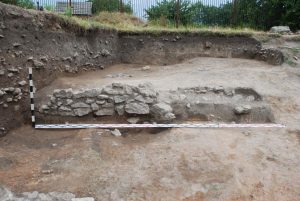Archaeologists unearthed parts of 2000-years-old fortification system that surrounded the ancient city of Tanais at the mouth of the Don river by the Sea of Azov in modern Russian Federation.

The recent excavations of the Greek colony Tanais determined that the fortification system of the ancient city was more elaborate than previously thought. The city was established in early 3rd century BC in the border area between the Antique civilization and steppe tribes. According to the researchers, the settlers used architectural patterns known from Greece to establish the colony on the fringe of the Greek world.

So far the researchers believed that the city was not fortified. But it turned out that the city wall was built in a technique involving raising two faces and filling the inner space with clay and stone rubble. The stones used were roughly processed. A ditch was dug behind the wall with the outer side strengthened with a retaining wall. It is also possible that there was a ditch on the inner side, which was normally used by lightly armoured defenders, such as archers or slingers.

Another significant find was a bridge leading over the ditch to the town gate. It was constructed with wood and stone, with pillars made of stone on one side and of wooden ones on the other. The bridge did not run perpendicularly to the gate but at an angle which made it harder to storm the gate or use battering rams.
(after Tomasz Scholl, Marcin Matera & Nauka w Polsce)